|
“Drake’s ships believed found off Panama”
November 08, 2011, ABC News, Australia
“More than four centuries after English adventurer Sir Francis Drake went to his watery grave off Panama’s coast, archaeologists believe they have found two of the last ships he commanded.
In emerald Caribbean waters where the privateer is said to lie buried in a lead coffin, explorers using deep sea oil technology found three large ship sections offering strong clues that they belonged to Drake’s Elizabeth and Delight.
Famed for circumnavigating the globe and routing the Spanish Armada in 1588, Drake is also remembered as a slaver and pirate who acted with the blessing of Queen Elizabeth I.
More than 24 metres of well-conserved hull sections dating back to Drake’s era show signs of having been run aground and burned to the water line, consistent with the tale of how his crew scuttled the vessels before returning to England.”
[Full Story]
“13th century Mongolian wreckage discovered
off Japanese seabed”
October 25, 2011, The Daily Telegraph, UK
“The wreck of a Mongolian ship presumed to have been part of a 13th century invasion fleet has been discovered beneath the seabed off southern Japan.
The vessel is the first of its kind to have been discovered relatively intact and dates from a series of attempts by Kublai Khan, emperor of the Yuan Dynasty, to subjugate Japan between 1274 and 1281.
Researchers have previously only been able to recover anchor stones and cannonballs from the scattered wrecks of the Mongol fleets and they believe that this latest find will shed new light on the maritime technology of the day.
The warship was located with ultrasonic equipment about 3 feet beneath the seabed at a depth of 75 feet.”
[Full Story]
“Blackbeard Cannon to be Recovered”
October 21, 2011, Popular Archaeology, USA
“A team of researchers led by the Department of Cultural Resources’ Underwater Archaeology Branch of North Carolina are preparing to recover an eight-foot, one-ton cannon as early as Wednesday, October 26, from the 300-year-old wreck of the notorious pirate Blackbeard’s flagship, the Queen Anne’s Revenge.
Encased in a cement-like concretion of sand, salt and sea life, the total encasement, along with the cannon, holds the promise of containing other artifacts.
The expectation is not unreasonable, as previous recoveries, which included 12 other cannons from the wreck, yielded artifacts from their concretions such as cannon shot, gun flints, and other items of life aboard the vessel.
The 300-ton flagship sank off Beaufort Inlet in North Carolina in 1718, intentionally run aground by Blackbeard (Edward Teach) after blockading Charleston Harbor and refusing to accept an offer of a pardon by the Governor of the colony.”
[Full Story]
“History uncovered beneath the waves”
October 09, 2011, The Scotsman, Scotland
“The remains of a Neolithic stone circle that could rival the most impressive in Britain may have been found off the coast of Orkney.
Archaeologists surveying the seabed near the island chain’s famous Ring of Brodgar believe they could have discovered an earlier version just 500 metres offshore from the major tourist attraction.
Preliminary findings from an investigation seeking previously hidden historical sites in the area have raised hopes that prehistoric structures built up to 5,000 years ago have survived, even though they were submerged under the waves by rising sea levels.
Marine surveys – using remote sensing and seismic profiling techniques – have revealed “anomalies” which could be man-made structures around 12 feet under water.
Seismic images taken in the Loch of Stenness appear to show a large circular feature in the water south of the Ring of Brodgar, the third-largest stone circle in the British Isles after Avebury and Stanton Drew in England and thought to date back to 3000-2000BC.”
[Full Story]
“Documentary Brings World’s Oldest Underwater City
Back to Life”
October 08, 2011, Science Daily, USA
“Just a few metres under the sea, off the southern coast of Greece, lies Pavlopetri — the oldest submerged city in the world.
A team of archaeologists from The University of Nottingham, working with the Ephorate of Underwater Antiquities of the Hellenic Ministry of Culture, has spent the last three years surveying the site which was first discovered in the late 1960’s.
This summer the city, which dates back over 5,000 years, became the first underwater city to be fully digitally mapped and recorded creating a highly detailed stone by stone plan in photo-realistic 3D.
In a ground breaking collaboration, movie industry CGI specialists were invited to be part of a research team in the field to use state-of-the-art computer graphics in combination with the archaeological survey data as it was recovered to help bring the ancient city back to life.”
The Pavlopetri Underwater Archaeology Project
BBC progamme site with video clips
Full Science Daily Story
“Discovery of English shipwreck at the mouth of the Thames”
September 19, 2011, Sail World, UK
“A mystery sunken sailing ship lying in 110 metres of water at the entrance to the Thames River is tipped to be a ship of the English Royal Africa Company, according to items retrieved from the vessel.
This is the conclusion of the discoverer of the items, Odyssey Marine Exploration, a world leader in deep-ocean shipwreck exploration.
Discovered during the Atlas Project, believed to be the most extensive shipwreck search operation ever launched encompassing 5,000 square miles of ocean in 2005/6, the significant items in the wreck were: An unmarked 17th-century tobacco pipe, Three glass bottle bases, A wooden folding rule, Manilla bracelets and… Elephant tusks.
An examination of these artifacts has established that the wreck is of a late 17th-century shipwreck that the company calls 35F.
Close study of the artifacts by Odyssey’s archaeological team has led to the hypothesis that the wreck may represent the westernmost example of a West African trader and the only example of this date known off the UK.”
[Full Story]
“Bulgarian Archaeology Finds Said to Rewrite History
of Black Sea Sailing”
September 12, 2011, Novinite, Bulgaria
“Massive ancient stone anchors were found by divers participating in an archaeological expedition near the southern Bulgarian Black Sea town of Sozopol.
The 200-kg beautifully ornamented anchors have two holes in them – one for the anchor rope and another one for a wooden stick. They were used for 150-200-ton ships that transported mainly wheat, but also dried and salted fish, skins, timber and metals from what now is Bulgaria’s coast.
The anchors’ shape suggests they were used by Creto-Mycanaean, Phoenician or Carian sailors in the 15th-12th centuries BC, which would refute the hypothesis that Greeks were the first Black Sea sailors starting the 12th century BC, the BGNES news agency points out”
[Full Story]
“Scientists explore wreck thought to be part of 1812 fleet”
September 2011 Edition, Bay Journal, USA
“Artifacts recovered from ship submerged in Patuxent suggest it could be the USS Scorpion.
The vessel was once part of “Barney’s Flotilla,” a small but scrappy collection of gunboats launched in 1814 to confront the British navy on the Chesapeake Bay. The superior British naval forces had run rampant through the Bay since the war began, raiding port towns and farmland at will.
Led by Commodore Joshua Barney, the flotilla moved easily through the Bay’s shallow waters and bedeviled the British as they made their way toward Washington, D.C. British ships eventually chased the flotilla to the upper reaches of the Patuxent River.
On a stifling day in August 1814, the Americans faced defeat. Rather than leave the vessels in British hands, they destroyed the flotilla and continued on foot to help defend the nation’s capital.”
[Full Story]
“Tons of silver and gold coins recovered from shipwreck”
August 28, 2011, TruthDive, India
“Odyssey Marine Exploration has recovered over 500,000 silver coins weighing more than 17 tons, hundreds of gold coins, worked gold, and other artefacts from a Colonial period shipwreck site code-named ‘Black Swan’ in an undisclosed location in the Atlantic Ocean.
All recovered items have been legally imported into the Unites States and placed in a secure, undisclosed location where they are undergoing conservation and documentation.
It is believed that this recovery constitutes the largest collection of coins ever excavated from a historical shipwreck site.”
[Full Story]
“First century B.C. Roman shipwreck
that carried wine jars found”
August 26, 2011, BioScholar News, UK
“A 98 foot-long Roman cargo ship dating to the first century B.C. has been found about 130 feet deep near the port city of Vlora.
Most of the jars, or amphoras, lay unbroken on the sea floor, and as their stoppers had gone, they were empty.
‘The ship is one among five ancient wrecks we discovered last month. The other four were just north in Montenegro’, Discovery News quoted archaeologist Jeff Royal, of the RPM Nautical Foundation, as saying.
The coasts of both Albania and Montenegro remained unexplored until 2007, when Florida-based RPM Nautical Foundation initiated a coastal survey aimed at identifying submerged archaeological artifacts in both countries.”
[Full Story]
“Ancient Roman Ship Discovered off Albanian Coast”
August 17, 2011, Balkan Insight, Albania
“The remains of a 2,100-year-old Roman ship have been discovered off the Karaburun Peninsula in Albania’s southern coast by archaeologists.
A research team comprised of Albanian and US archaeologists found the wreckage this week at a depth of 50 metres and believe it dates to between the second and first century BC.
According to archaeologists, the discovery of a 30 metre-long ship with more than 300 amphoras-a type of ceramic container- aboard, sheds new light on the ancient population of the southern Illyrian coast and its trade relations in the Mediterranean.
“The growing maritime evidence points toward an intense wine industry and associated heavy trade that developed in the 2nd century BC and continued into the 1st century CE,” Dr Jeff Royal of the RPM Nautical Foundation said in a statement.”
[Full Story]
“‘Spanish Armada’ wreck discovered”
August 05, 2011, Irish Times, Ireland
“The wreckage of a sunken vessel believed to be from the Spanish Armada has been discovered off the Donegal coast.
Underwater archaeologists are to explore the historic wreck, located in shallow waters in Rutland Harbour, near Burtonport.
Evidence uncovered during a dive survey revealed the vessel was likely to be a 16th century ship, possibly part of the 1588 Spanish Armada.
Up to 24 ships of the 130-strong ill-fated fleet were wrecked along Ireland’s rocky coastline.
The location of the latest vessel means the search team will have better than usual access to find any artefacts that may still be on board.”
[Full Story]
“Is this Captain Henry Morgan’s ship hull?”
August 03, 2011, BBC News, UK
“Archaeologists from Texas State University believe they have uncovered a ship found near the site where Welsh Admiral Sir Henry Morgan’s ships wrecked in 1671.
The infamous privateer – widely known as Captain Morgan – was on his way to Panama City with his men.
The researchers say they might have found a section of the hull as well as cargo boxes and coral-covered chests.”
[Watch the BBC News Video Report]
“‘World’s oldest’ wreck found in Swedish Baltic”
July 15, 2011, The Local, Sweden
“What looks very much like a cog, a ship used in the Baltic between the 12th and the 14th centuries, has been discovered in the waters between the islands of Gotland and Öland off the east coast of Sweden.
The vessel showed up in sonar pictures of the area, causing experts on shipwrecks to believe that they may have the world’s oldest intact shipwreck on their hands.
“The hairs at the back of my neck stood up when I first saw the pictures,” said shipwreck expert Erik Bjurström to the local Barometern daily.
Because of the age of the ship and the location, historians cannot but wonder if it in fact could be the legendary ship that carried the Danish king Valdemar Atterdag home after his sacking of Visby on Gotland, in 1361 AD.”
[Full Story]
“First-aid kit in shipwreck reveals millennia-old practices”
July 09, 2011, New Zealand Herald, New Zealand
“Institute first-aid kit found on a 2000-year-old shipwreck has provided a remarkable insight into the medicines concocted by ancient physicians to cure sailors of dysentery and other ailments.
Medicines found inside a wooden chest included pills made of ground-up vegetables, herbs and plants such as celery, onions, carrots, cabbage, alfalfa and chestnuts – all ingredients referred to in classical medical texts.
The tablets, which have miraculously survived being under water for more than two millennia, also contain extracts of parsley, nasturtium, radish, yarrow and hibiscus.
They were found in 136 tin-lined wooden vials on a 15m-long trading ship which was wrecked about 130BC off the coast of Tuscany.”
[Full Story]
“Black Sea’s ancient coast found – report”
July 07, 2011, The Sofia Echo, Bulgaria
“Bulgarian scientists have found the ancient shores of the Black Sea, currently deep beneath the waves, which they claim were the original shores about 7500 years ago, when the Black Sea at the time was just a fresh water lake, the Bulgarian National Television (BNT) reported on July 7 2011.
The team, led by Professor Petko Dimitrov of the Institute of Oceanology in Varna, which is part of the Bulgarian Academy of Sciences (BAS), returned from an expedition aboard the research vessel Akademik, saying that they have found the ancient coastline close to the Cape of Emine.
Archaeological evidence suggest that this particular spot was part of the ancient coastline, the BNT said.
The common theory of the creation of the Black Sea says that there was a massive deluge through the straits of Bosporus (modern Istanbul), where waters from the Mediterranean flooded into the lake.
Once the Mediterranean Sea breached the Bosporus Strait, it irreversibly changed the history of the people in the area, as well as the flora and fauna.”
[Full Story]
“Traces of ancient aboriginals found in Ontario lake bottom”
June 06, 2011, The Vancouver Sun, Canada
“A team of Canadian scientists has used geology-style drill cores from an Ontario lake bottom to gather evidence of toolmaking and perhaps even duckhunting by ancient aboriginals about 10,000 years ago – the first discovery of its kind in North America, and one that could point the way to further breakthroughs in underwater archeology around the world.
Led by researcher Lisa Sonnenburg of McMaster University in Hamilton, Ont., the team took sediment samples from a shallow section of Rice Lake – a popular summer vacation spot northeast of Toronto – where prehistoric First Nations were known to have camped soon after the glaciers retreated at the end of the last ice age.
The scientists found more than 150 tiny flakes of quartz in the lake’s murky depths – strong evidence that an ancient shoreline, submerged long ago, was used by some of Canada’s earliest inhabitants as a site for manufacturing spear points, scrapers and other tools for fishing and hunting.
The discovery not only sheds new light on the activities of those prehistoric people, but also pioneers a novel method of detecting the presence of ancient aboriginals in what are now drowned landscapes – a technique with huge research potential in Canada’s Great Lakes region and many other places around the world where suspected settlement sites have became inundated over time.”
[Full Story]
“Atlantis Lies Hidden under Ob Sea…?”
May 31, 2011, Russia InfoCentre, Russia
“Huge Novosibirsk Reservoir informally called the Ob Sea (Novosibirsk region) harbours lots of secrets, archeologists believe.
In the 1950s a dam was built on the Ob River and Novosibirsk Reservoir flooded a large area with lots of buried historical values.
Before the flooding Leningrad archeologists headed by Mikhail Gryaznov found about 70 archaeological monuments there, but had time to examine only 12 of them.
This spring archeologists have also found numerous artifacts in the remains of an ancient settlement dated to the late Bronze Age (9th -8th centuries BC).”
[Full Story]
“Photos: 8000-year-old advanced civilisation in Konkan Coast?”
May 26, 2011, Daily News & Analysis, India
“Did the Konkan coast from Shrivardhan in Raigad to Vengurla in Sindhudurga host a human habitat around 8000 years ago?
Did that population have well-developed engineering skills? Was there a unique Konkan culture in existence in 6000BC?
A new archaeological discovery, below sea level along the Konkan coast, could give answers to these questions. And explorers say the answer could well be a big ‘Yes!’
Researchers have found a wall-like structure that is 24 kilometres long, 2.7 metres tall, and around 2.5 metres wide. The structure shows uniformity in its construction.
“The structure is not continuous throughout the 225 kilometres from Shrivardhan to Raigad, but it is uniform”, said Dr Ashok Marathe, professor, department of archaeology, Postgraduate and Research Institute, Deccan College, Pune.
“It has been found three metres below the present sea level. It has been constructed on the ancient sand beach, which was taken as the base for the construction. Considering the uniformity of the structure, it was obvious that the structure is man-made and not natural.””
[Watch The Slideshow]
“Second excavation of sunken vessel ‘Nanhai No. 1’ begins”
March 22, 2011, People’s Daily Online, China
“Thirteen professionals have arrived at the Maritime Silk Road Museum of Guangdong Province and are preparing for the second indoor trial excavation of the sunken vessel “Nanhai No. 1,” according to announcement made by the museum on March 21.
The excavation is expected to last for around one month.
The second trial excavation will be carried out on the bow and stern of the ship and will verify which end is indeed the bow and stern.
According to sources, the excavation will further perfect the indoor underwater archaeological parameters and make preparations for the full excavation plan.”
[Full Story]
“10,000-year-old spear is an archeological gem”
March 19, 2011, Tampa Bay Online, USA
“Archaeologists hope a major find in a spring an hour and a half south of Tampa helps piece together how Florida’s earliest inhabitants lived.
On Friday, dive teams from The Florida Aquarium and the University of Miami exploring and excavating Little Salt Spring in southern Sarasota County carried to the surface a spear that dates back about 10,000 years.
Dive teams give a plastic box containing artifacts that date back 10,000 years to John Gifford, an underwater archaeologist at the University of Miami
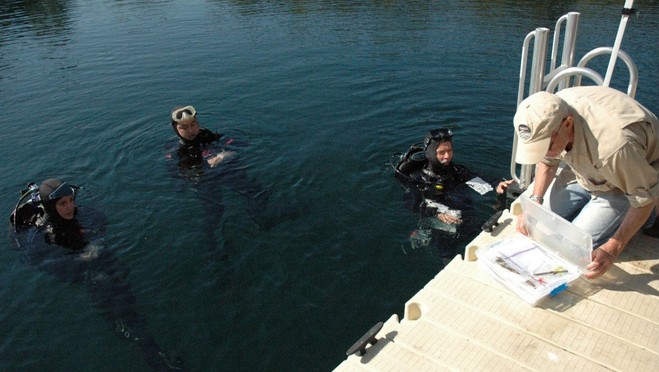
University of Miami / Tampa Bay Online, USA
When archaeologists put pieces of it back together, the artifact will measure more than a foot long.
The archaeologists believe they have found the remains of camp sites or prehistoric garbage dumps.
What makes the site so unique is that the water entering the spring at about 250 feet beneath the surface has been underground for so long it contains no oxygen. There are no microbes or bacteria that normally destroy such relics.”
[Full Story]
“Underwater explorer brings treasure hunt to Vail”
January 02, 2011, USA Today, USA
“Barry Clifford has been searching the high seas from Africa to Cape Cod, and he’s hit real treasure.
The Massachusetts-based historian and underwater explorer discovered the wreckage of the Whydah, a pirate ship that sunk off the coast of Cape Cod in 1717, making him the discoverer of the only confirmed pirate treasure in existence.
The Whydah discovery not only gave historians a never-before-seen view inside the age of 17th century pirates, but yielded real treasure — plunder from almost 50 other ships that included West African art, treasure chests of gold and silver and weapons from the time.
The discovery will be featured in an exhibit at the Denver Museum of Nature and Science that opens March 4 called Real Pirates.”
[Full Story]
“Maya pools await diving explorers”
January 02, 2011, USA Today, USA
“Cara Blanca’s sacred Maya pools, hidden in the warm hills of Belize, still beckon.
Cobalt blue waters, draped vines and beads of sweat are what you remember from your first visit to these forest cenotes, as the pools are known.
Two years ago, a USA TODAY report filled readers in on researchers’ plans to dive deep into the cenotes, surrounded by the ruins of Maya sweat lodges from 800 A.D.
And a look at the first dives into the pools this summer was a Top 10 video on National Geographic’s website this year.”
[Full Story]
|
|
To understand why this News Page is sometimes late here is some information about Fibromyalgia
The Morien Institute
Research Projects
if you would like to support our Marine Archæology research
please send us a book

from our Wish List
“Eden in the East: The Drowned Continent of Southeast Asia”
by
Stephen Oppenheimer

Buy This Book From:
Amazon.com
Amazon.co.uk
“A book that completetly changes the established and conventional view of prehistory by relocating the Lost Eden – the world’s 1st civilization – to SouthEast Asia. At the end of the Ice Age, SouthEast Asia formed a continent twice the size of India, which included Indochina, Malaysia, Indonesia and Borneo.
The South China Sea, the Gulf of Thailand and the Java sea, which were all dry, formed the connecting parts of the continent. Geologically, this half sunken continent is the Shunda shelf or Sundaland.
He produces evidence from ethnography, archaeology, oceanography, from creation stories, myths and sagas and from linguistics and DNA analysis, to argue that this founder civilization was destroyed by a catastrophic flood, caused by a rapid rise in the sea level at the end of the last ice age.”
…
exclusive
…
October 2002
Morien Institute
illustrated interview with
Professor Masaaki Kimura
of the University of the Ruykyus,
Okinawa, Japan, regarding
the discovery of:
“Megalithic structures found underwater off the coast of
Yonaguni-jima, Japan”
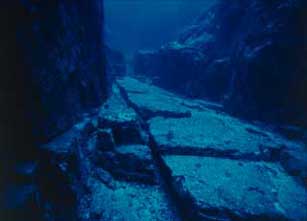
…
exclusive
…
June 2002
Morien Institute
illustrated interview with
Dr Paul Weinzweig
of Advanced Digital Communications,
Havana, Cuba, regarding
the discovery of:
“Megalithic urban ruins discovered off the coast of Cuba”
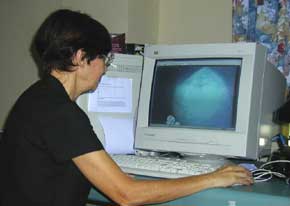
“Maritime Archaeology:
A Technical Handbook”
by
Jeremy Green
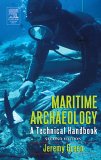
EU English Edition
“Jeremy Green’s systematic overview of maritime archaeology offers a step-by-step description of this fast-growing field. With new information about the use of computers and Global Positioning Systems, the second edition of this handbook shows how to extract as much information as possible from a site, how to record and document the data, and how to act ethically and responsibly with the artifacts.
Treating underwater archaeology as a discipline, the book demonstrates how archaeologists, “looters,” academics, and governments interact and how the market for archaeological artifacts creates obstacles and opportunities for these groups.
Well illustrated and comprehensive in its approach to the subject, this book provides an essential foundation for everybody interested in underwater environments, submerged land structures, and conditions created by sea level changes.”
“Discoveries: Underwater Archaeology”
by
Jean-Yves Blot
&
Alexandra Campbell
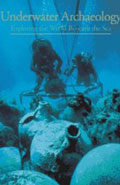
EU English Edition
“Some of the most exciting archaeological discoveries aren’t made by Indiana Jones wannabes prowling through the jungle in search of forgotten cities or by Egyptologists looking for lost passageways in the pyramids. They are found by divers exploring shipwrecks such as the Titanic and the U.S.S. Monitor.
Every now and then they even uncover the remains of human settlements sleeping beneath the waves. Underwater Archaeology is an inexpensive and colorful book about the people who do this work and what they sometimes bring to the surface–a great introduction to the subject. It is another fine title in the Discoveries series of books published by Harry N. Abrams.”
“Man: 12, 000 Years Under the Sea
a Story of Underwater Archaeology”
by
Robert F. Burgess
&
George F. Bass
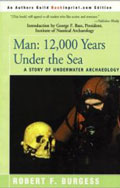
EU English Edition
“This encyclopedia is the first comprehensive reference book on the discovery and recovery of underwater archaeological remains around the world and across time. Written by archaeologists and other scientists who have made the discoveries, it offers a wealth of authoritative and accessible information on shipwrecks, drowned cities, ritual deposits, and other relics of our submerged past.
The volume’s 450 alphabetically arranged entries cover sites from prehistory to the modern era (including Titanic), legislation and legal issues, organizations, nations and regions, research themes, and technology and techniques. Length generally ranges from two paragraphs for reef netting and Southampton Centre for Maritime Archaeology to about four pages for Great Lakes and remote sensing.
More than 100 illustrations in color are complemented by more than 200 black-and-white drawings and photos. Most entries append a bibliography, usually of recent books, journal articles especially from the leading journal of the discipline, International Journal of Nautical Archaeology, and professional conference papers.”
“Encyclopedia of Underwater and Maritime Archaeology”
by
James P. Delgado
(Editor)
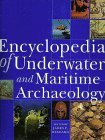
EU English Edition
“This encyclopedia is the first comprehensive reference book on the discovery and recovery of underwater archaeological remains around the world and across time. Written by archaeologists and other scientists who have made the discoveries, it offers a wealth of authoritative and accessible information on shipwrecks, drowned cities, ritual deposits, and other relics of our submerged past.
The volume’s 450 alphabetically arranged entries cover sites from prehistory to the modern era (including Titanic), legislation and legal issues, organizations, nations and regions, research themes, and technology and techniques. Length generally ranges from two paragraphs for reef netting and Southampton Centre for Maritime Archaeology to about four pages for Great Lakes and remote sensing.
More than 100 illustrations in color are complemented by more than 200 black-and-white drawings and photos. Most entries append a bibliography, usually of recent books, journal articles especially from the leading journal of the discipline, International Journal of Nautical Archaeology, and professional conference papers.”
“Submerged Cultural Resource Management: Preserving and Interpreting Our Sunken
Maritime Heritage”
James D. Spirek
(Editor)
&
Della A. Scott-Ireton
(Editor)
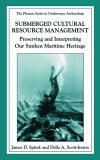
EU English Edition
“This vital book is a collection on the various ways archaeologists and resource managers have devised to make available and interpret submerged cultural resources for the public, such as underwater archaeological preserves, shipwreck trails, and land-based interpretive media and literature.
The concept of preserves, parks, and trails has proven to be an effective and popular method of public education and heritage tourism with the end result being a greater public understanding of the value of preserving and protecting shipwrecks, and other submerged cultural resources, for the future.
Within each contribution, the authors focus on: legislation; economic benefits; interpretation methods; problems and successes; future directions regarding their preserve, park, or trail programs.
Various approaches to the concept have been explored and this book is an effort to make available our experiences in the management of submerged cultural resources for the public. This volume is an invaluable resource to underwater archaeologists, cultural and heritage resource managers, museum and heritage educators and those studying these professions.”
“Successful Underwater Photography”
by
Brian Skerry
&
Howard Hall
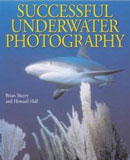
EU English Edition
“From fundamental principles of photographing marine life to making a living selling underwater photographs, Successful Underwater Photography provides an unlimited wealth of practical advice, surefire strategies, and tested tips for taking extraordinary photos of elusive underwater subjects.
Written by two top photographers who specialize in marine photography, this solid, lavishly illustrated field guide provides no-nonsense information on such topics as taking available-light photographs, silhouettes, marine wildlife portraits, close-focus wide angle photographs, and extension tube photographs to name just a few. Readers will also find proven guidance for purchasing underwater photographic equipment, taking photos of shipwrecks, and repairing and maintaining field equipment.
“Digital Imaging for the
Underwater Photographer”
by
Jack Drafhal
&
Sue Drafhal
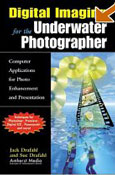
EU English Edition
“How to Solve Common Problems, Repair Images and Create Dazzling Presentations; Focusing on the aspects of digital imaging that are most important to underwater photographers, this book is a step-by-step guide for the professional and amateur alike to improve their images and presentations.
Designed to help the underwater photographer make a smooth transition to digital imaging, this book discusses how to digitally refine, correct, and enhance underwater photographs. Detailing the equipment necessary, it also includes a discussion on the essentials of
scanning. There is also extensive information on Adobe Photoshop, and how it can be used to edit underwater pictures.
Designed to help the underwater photographer make a smooth transition to digital imaging, this book discusses how to digitally refine, correct, and enhance underwater photographs. Detailing the equipment necessary, it also includes a discussion on the essentials of scanning. There is also extensive information on Adobe Photoshop, and how it can be used to edit underwater pictures.
“Beneath the Seven Seas: Adventures with the Institute of Nautical Archaeology”
by
George F. Bass
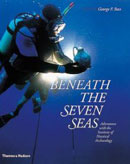
EU English Edition
“Readers will dive nearly 200 feet with Cemal Pulak on a royal ship that sank over 3,300 years ago off the Aegean coast of Turkey, and explore with Donny Hamilton the streets and houses of the richest English colony in the New World, the infamous pirate stronghold of Port Royal, Jamaica, swallowed by the sea in 1692.
They will accompany famed undersea explorer Robert Ballard, discoverer of the Titanic, as he and Cheryl Ward search for shipwrecks in the deep, oxygen-free waters of the Black Sea. They will wade with archaeologist Fred Hocker through mud along the bank of a South Carolina river, and then sail through a gale with Susan Womer Katzev on a full-scale replica of the best-preserved ancient Greek ship yet raised from the depths of the Mediterranean.
The book describes the tragic loss, within sight of their loved ones, of seamen returning home to Portugal in 1606, at the end of a two-year voyage to the East on the Nossa Senhora dos Martires, and then describes the fate of the crew of another Portuguese ship, the Santo Antonio de Tanna, which sank off Mombasa, Kenya, while trying to lift the siege of Fort Jesus by Omani Arabs in 1697.”
“Underworld: The Mysterious Origins
of Civilization”
by
Graham Hancock
&
Santha Faiia
(Photographer)

EU English Edition
“From Graham Hancock, bestselling author of Fingerprints of the Gods, comes a mesmerizing book that takes us on a captivating underwater voyage to find the ruins of a lost civilization that’s been hidden for thousands of years beneath the world’s oceans.
While Graham Hancock is no stranger to stirring up heated controversy among scientific experts, his books and television documentaries have intrigued millions of people around the world and influenced many to rethink their views about the origins of human civilization. Now he returns with an explosive new work of archaeological detection.
In Underworld, Hancock continues his remarkable quest underwater, where, according to almost a thousand ancient myths from every part of the globe, the ruins of a lost civilization, obliterated in a universal flood, are to be found.”
|